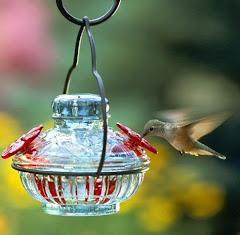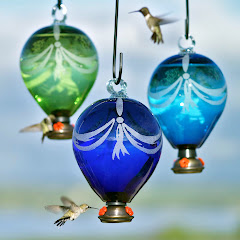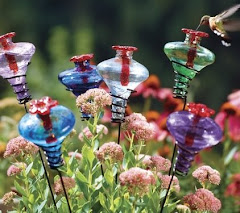If you live in the United States and are amazed to see the tiniest hummingbird in your garden, chances are you're really seeing the hummingbird moth. Often mis-sited as the Bee Hummingbird (the world's smallest bird - found in Cuba only), the hummingbird moth has the look and behaviour to fool the sharpest eye into thinking it's a miniature hummingbird.

One of the tricks of the hummingbird moth, unlike other moths, is that it thrives and feeds in daylight. They live on nectar, similar to hummingbirds, and will hover over the same flowers hummers like (honeysuckle, trumpet vine, lilac, bee balm, etc). They extract the nectar through their proboscis, which combined with their body length and coloring, is easily confused as a beak.
Hummingbird moths have similar colors in their bodies as hummingbirds, but their pattern differences are the dead-giveaway. Moths like the Clearwing Hummingbird Moth (pictured above) have red/brown bands across their abdomens, and there are tufts of hair that look feather like. Hummingbirds don't have stripes like these, instead their color is typically concentrated on their throat, wings, sometimes with solid iridescent color on their back.
Hummingbirds are also much more skittish than their aping moths. Chances are you'll be able to sneak up on a moth but not a true hummer.
Although the idea of "baby" or Bee hummingbirds in your garden maybe exciting, if you do see a hummingbird moth instead don't be disheartened. They are truly fascinating creatures and still fun to watch flitting from flower to flower. And the fact that you're attracting another nectar-loving creature to your yard is a positive! Maybe one morning you'll be happily surprised by a real hummer visit.





